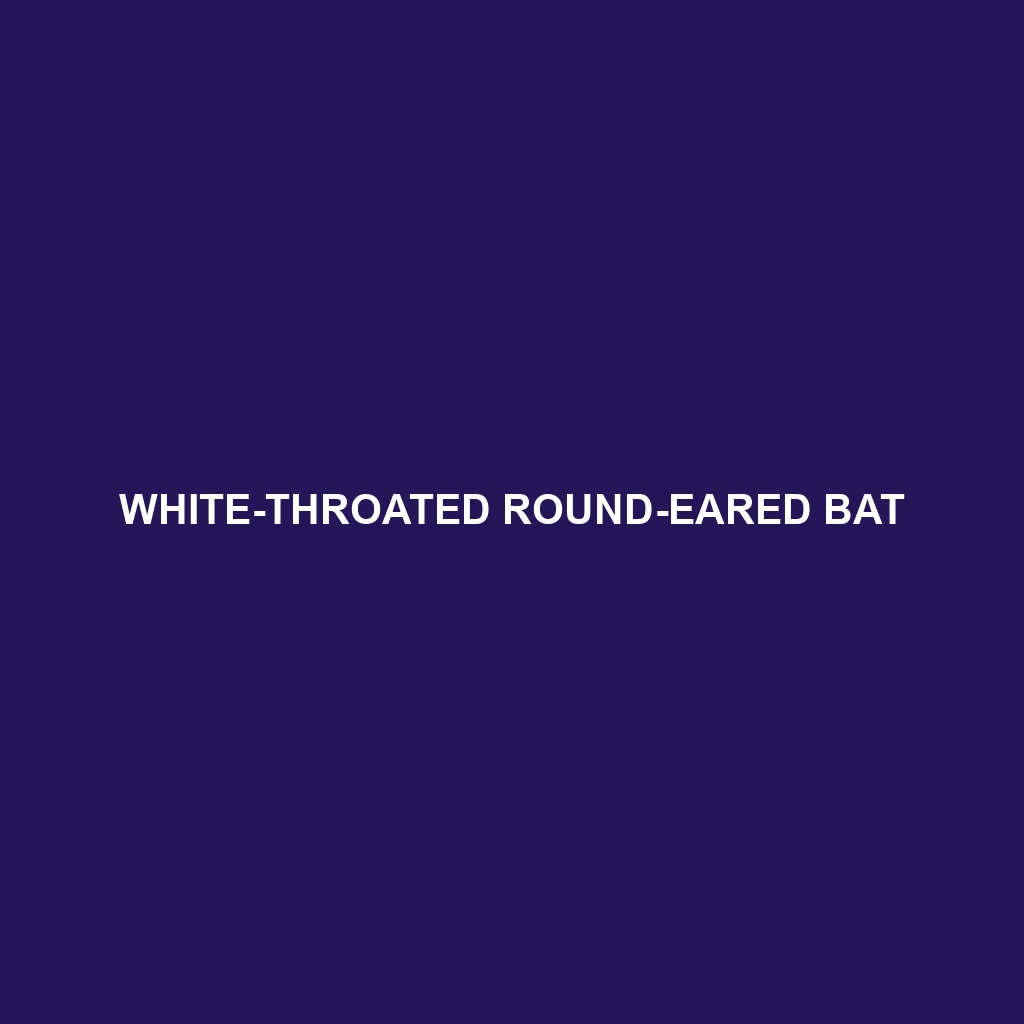Schulz’s Round-eared Bat
Common Name: Schulz’s Round-eared Bat
Scientific Name:
Habitat
Schulz’s Round-eared Bat is primarily found in the forested regions of Central and South America. This species thrives in humid tropical rainforests, often roosting in caves or hollow trees where moisture levels and temperature are optimal for their survival. Locations such as the Amazon rainforest and coastal forests are significant habitats for this bat, providing a rich environment for foraging and breeding.
Physical Characteristics
This medium-sized bat typically measures between 8 to 10 cm in body length with a wingspan of up to 30 cm. Its fur is dense and varies from a light brown to dark gray, allowing it to blend into its forest surroundings effectively. One of the most distinctive features of Schulz’s Round-eared Bat is its rounded ears, which aid in echolocation and navigation through dense foliage. Their large, expressive eyes are adapted for low-light conditions, making them efficient nocturnal hunters.
Behavior
Schulz’s Round-eared Bat is known for its social structure, often found roosting in small colonies. They exhibit nocturnal behavior, emerging at dusk to feed, utilizing their advanced echolocation skills to navigate and locate prey. Their agile flight patterns and ability to maneuver through the dense vegetation are key attributes that support their survival. During the day, they typically find shelter to rest and conserve energy.
Diet
The diet of Schulz’s Round-eared Bat consists mainly of insects such as moths, beetles, and flies, with a preference for those found in forested areas. These bats employ a foraging strategy known as ‘hawking’, where they catch insects mid-flight. The consumption of various insects places them as crucial players in controlling pest populations in their ecosystem.
Reproduction
Breeding typically occurs during the warmer months, with mating rituals observed in late spring. Female Schulz’s Round-eared Bats usually give birth to one offspring per season, after a gestation period of approximately 2 to 3 months. Young bats are weaned within weeks and begin to fly shortly after, leading to early independence as they learn to forage alongside their mothers.
Conservation Status
The Schulz’s Round-eared Bat is currently classified as vulnerable due to habitat loss caused by deforestation and land conversion for agriculture. Conservation efforts are critical to preserve their habitats and ensure their survival, as they face increasing threats from environmental changes and human activities.
Interesting Facts
One fascinating aspect of Schulz’s Round-eared Bat is its impressive echolocation abilities, which allow it to detect objects as small as a few centimeters in size. Additionally, these bats are known to have intricate social behaviors, including grooming and vocal communications within their colonies, further enhancing their social bonds.
Role in Ecosystem
As insectivores, Schulz’s Round-eared Bats play a crucial role in maintaining the ecological balance in their habitats. By controlling insect populations, they help reduce crop damage and protect the health of the forest ecosystem. Their interactions with various species, including plants and other animals, underline their importance in biodiversity preservation.
